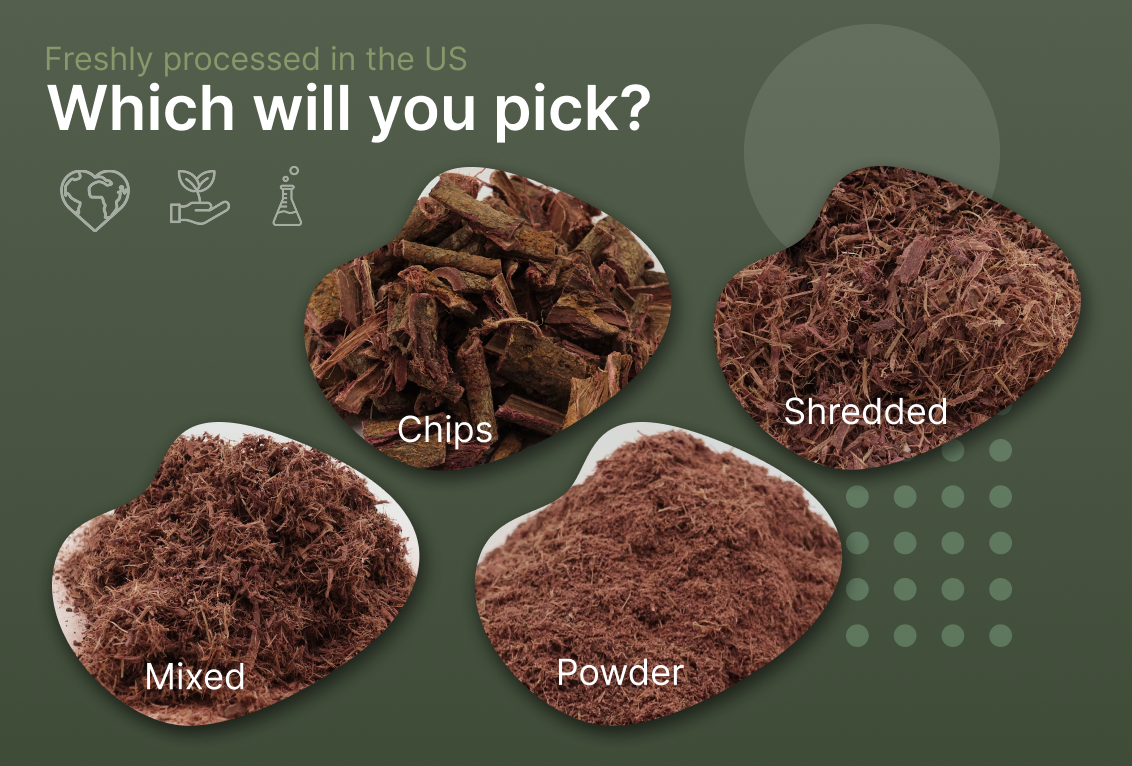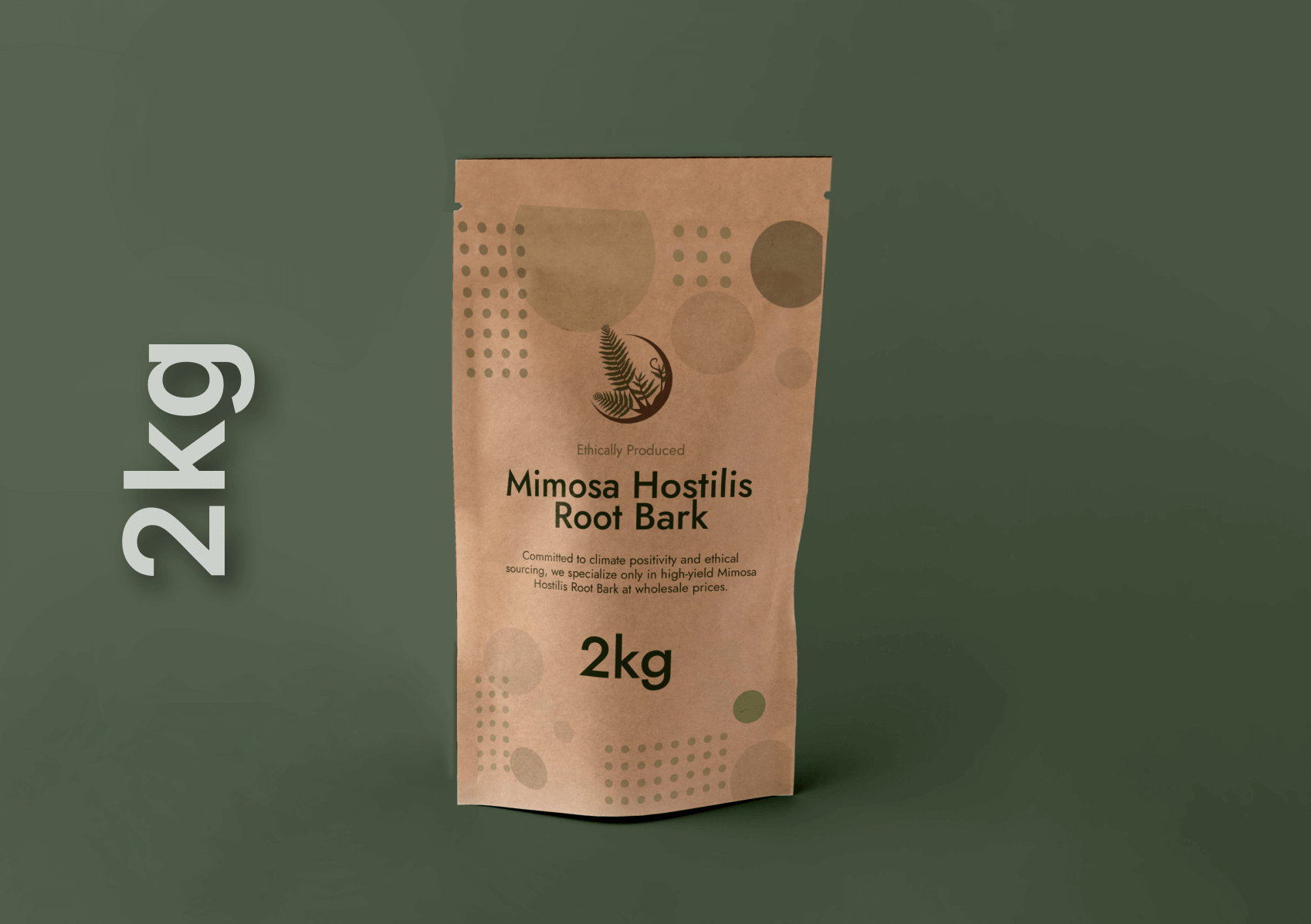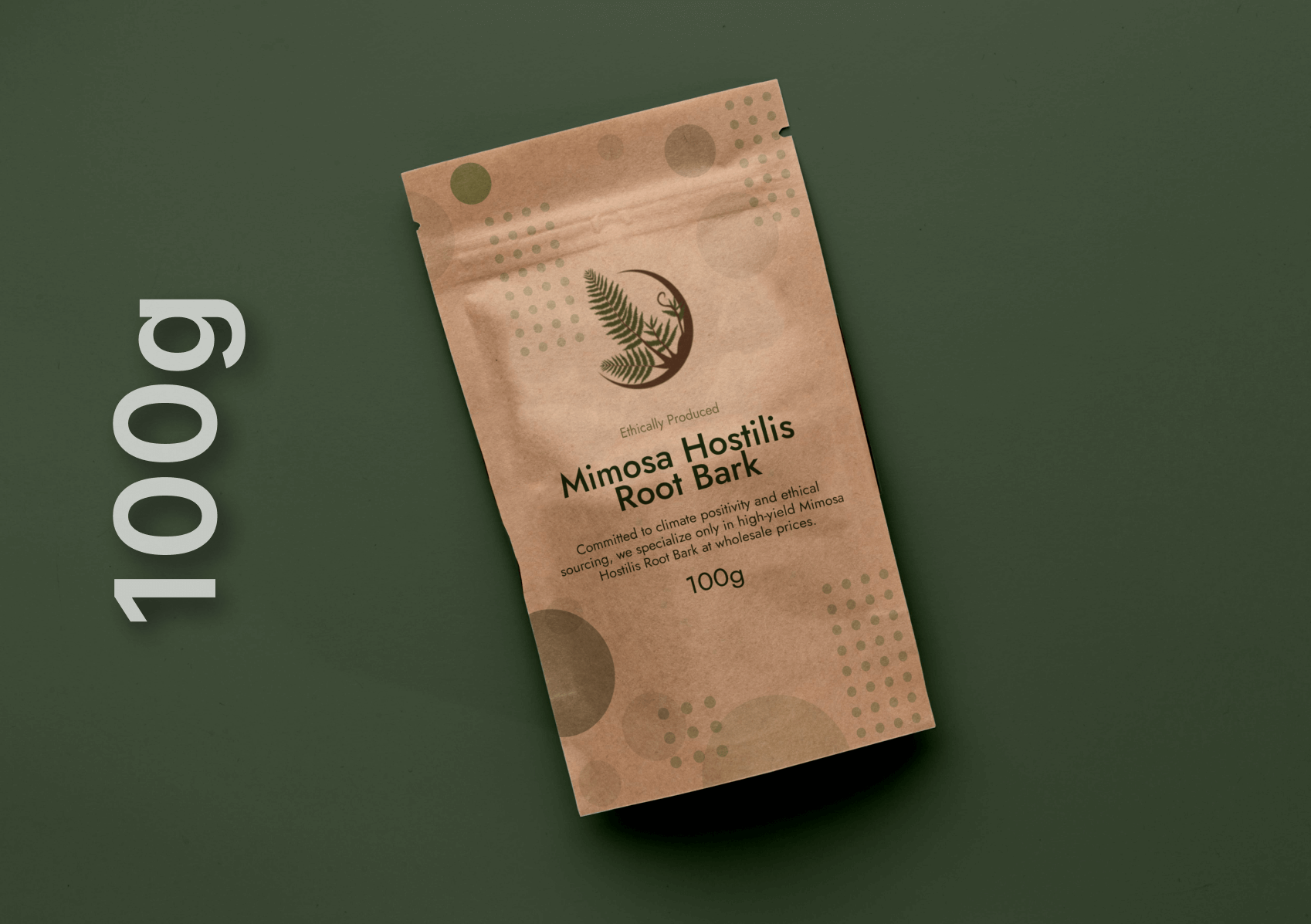Mimosa Hostilis, also known as Mimosa tenuiflora or Jurema Preta, is a remarkable natural plant native to South America. For centuries, indigenous cultures in Brazil and Mexico have revered this plant for its powerful regenerative and healing properties, especially in the treatment of skin injuries, burns, and wounds. Modern science is now validating what traditional healers have long known — that Mimosa Hostilis bark possesses bioactive compounds capable of significantly supporting the wound healing process.
Understanding the Healing Power of Mimosa Hostilis
Rich Phytochemical Composition
The root bark of Mimosa Hostilis is densely packed with beneficial compounds, including tannins, flavonoids, alkaloids, saponins, and xanthones. These active components work synergistically to provide antimicrobial, antioxidant, and anti-inflammatory effects.
-
Tannins help form a protective layer over wounds, reducing bleeding and preventing infection.
-
Flavonoids scavenge free radicals, promoting cell repair and reducing oxidative stress.
-
Saponins enhance skin hydration and facilitate faster tissue regeneration.
This phytochemical richness makes Mimosa Hostilis bark powder a natural powerhouse for dermal repair.
Traditional Uses in Wound Healing
Ancestral Medicine and Skin Recovery
Historically, the indigenous populations of Brazil and Mexico used the bark of Mimosa Hostilis to treat burns, ulcers, and open wounds. They would boil the bark to extract its medicinal essence and apply it directly to the skin or use it as a poultice.
This traditional method proved so effective that it gained recognition in modern Brazilian medicine during the 1980s when doctors began using Mimosa Hostilis bark extract to treat burn victims. Its results were remarkable — it accelerated tissue regeneration while minimizing scarring and infection risks.
Scientific Evidence Supporting Mimosa Hostilis in Wound Healing
Cell Regeneration and Collagen Production
Recent scientific studies have confirmed that Mimosa Hostilis stimulates fibroblast activity, which is vital for collagen synthesis — the structural protein responsible for skin strength and elasticity.
The increased collagen production leads to:
-
Faster wound closure
-
Reduced inflammation
-
Improved scar quality
Additionally, the antioxidant compounds within the bark help neutralize free radicals, preventing further cellular damage in the injured area.
Antimicrobial Properties
Wound infections are a major concern during recovery. Mimosa Hostilis extract exhibits broad-spectrum antimicrobial activity, effectively inhibiting the growth of bacteria such as Staphylococcus aureus, E. coli, and Pseudomonas aeruginosa.
This property makes it an excellent natural antiseptic, protecting wounds from pathogens without the side effects of synthetic antibiotics.
Mechanisms Behind Mimosa Hostilis’s Healing Effects
1. Formation of a Protective Barrier
When applied topically, the tannins in Mimosa Hostilis act as astringents, contracting tissue and forming a protective coating that shields wounds from external contaminants. This barrier also helps reduce fluid loss and speeds up the epithelialization process, crucial for new skin formation.
2. Anti-Inflammatory Action
Inflammation is the body’s natural response to injury, but excessive inflammation can delay healing. Flavonoids and xanthones in Mimosa Hostilis work to moderate the inflammatory response, thereby reducing pain, swelling, and redness around the wound area.
3. Cellular Regeneration
The bark’s rich nutrient profile supports cell proliferation, encouraging the growth of new tissue. This effect is particularly beneficial for burn victims, where large areas of skin require rapid regeneration.
4. Prevention of Scarring
Unlike synthetic healing agents, Mimosa Hostilis promotes regeneration rather than just repair. This leads to smoother skin recovery and less noticeable scars, thanks to the improved quality and organization of collagen fibers.
Modern Applications of Mimosa Hostilis in Skincare and Medicine
1. Natural Burn Creams and Balms
Today, Mimosa Hostilis bark powder is a common ingredient in natural burn creams, salves, and herbal ointments. These formulations harness its antimicrobial and regenerative properties to accelerate healing while keeping the skin hydrated and protected.
2. Cosmetic and Dermatological Uses
In the cosmetic industry, Mimosa Hostilis extract is used in anti-aging creams, skin repair serums, and scar treatment products. Its ability to stimulate collagen and reduce oxidative stress makes it valuable in preventing premature aging and promoting skin renewal.
3. Herbal and Pharmaceutical Research
Researchers are increasingly exploring how Mimosa Hostilis compounds could be utilized in pharmaceutical-grade wound dressings. The goal is to create biocompatible, plant-based healing materials that deliver antimicrobial action without harming the skin’s microbiome.
How to Use Mimosa Hostilis for Wound Care
Topical Paste or Poultice
You can make a topical healing paste by mixing Mimosa Hostilis bark powder with purified water or aloe vera gel. Apply it gently to clean wounds or burns and cover it with a sterile bandage.
Infused Oils and Creams
Mimosa Hostilis can be infused into carrier oils like coconut or jojoba. The infused oil can then be used as a daily skin treatment to soothe irritation, minor cuts, or insect bites.
Hydroalcoholic Extracts
These concentrated solutions are commonly used in herbal medicine for their antiseptic and regenerative qualities. When applied correctly, they can dramatically enhance tissue healing speed.
Note: Always ensure you are using pure, ethically sourced Mimosa Hostilis bark, free from contaminants or synthetic additives.
Why Choose Mimosa Hostilis Over Synthetic Treatments
-
Natural composition reduces allergic reactions.
-
Eco-friendly and sustainable compared to synthetic pharmaceuticals.
-
Multifunctional — antimicrobial, antioxidant, and collagen-boosting in one.
-
Proven track record in both traditional and modern medicine.
With growing concerns about chemical-laden products, Mimosa Hostilis offers a safer, effective, and natural alternative for wound management and overall skin wellness.
Safety and Precautions
While Mimosa Hostilis is generally safe for external use, always perform a patch test before applying it to larger areas of the skin. Avoid using on deep or infected wounds without medical supervision. Pregnant or breastfeeding individuals should consult a healthcare provider before use.
Conclusion
Mimosa Hostilis stands as one of the most potent natural remedies for wound healing, blending ancestral wisdom with scientific validation. Its combination of antioxidant, antimicrobial, and regenerative properties makes it a true ally in natural skincare and holistic medicine. Whether used in traditional form or modern formulations, this powerful botanical continues to redefine natural wound therapy, offering gentle yet effective healing drawn straight from the Earth.
In the pursuit of natural healing, Mimosa Hostilis remains an enduring symbol of resilience, regeneration, and balance between traditional knowledge and modern science.
FAQ’s
1. How does Mimosa Hostilis help wounds heal faster?
Mimosa Hostilis contains tannins, flavonoids, and saponins that promote collagen production, reduce inflammation, and protect against infection. These properties help wounds close more quickly and regenerate healthy skin with minimal scarring.
2. Can Mimosa Hostilis be used on burns?
Yes. Mimosa Hostilis bark extract is widely recognized for treating first- and second-degree burns. It soothes pain, prevents infection, and encourages tissue regeneration, helping the skin recover naturally without harsh side effects.
3. Is Mimosa Hostilis safe for all skin types?
Generally, Mimosa Hostilis is safe for most skin types, especially when used topically. However, it’s best to perform a patch test before applying it widely, as sensitive individuals may react to natural compounds in the bark.
4. Can I make my own Mimosa Hostilis healing paste at home?
Yes. Mix Mimosa Hostilis bark powder with a bit of purified water or aloe vera gel until you form a paste. Apply it to the affected area and cover with a sterile dressing. Always use pure, uncontaminated bark powder for the best results.
5. Where can I buy high-quality Mimosa Hostilis bark powder?
Look for reputable herbal suppliers that provide ethically sourced Mimosa Hostilis from Brazil or Mexico. Ensure the product is 100% natural, free from fillers or synthetic dyes, and lab-tested for purity.




